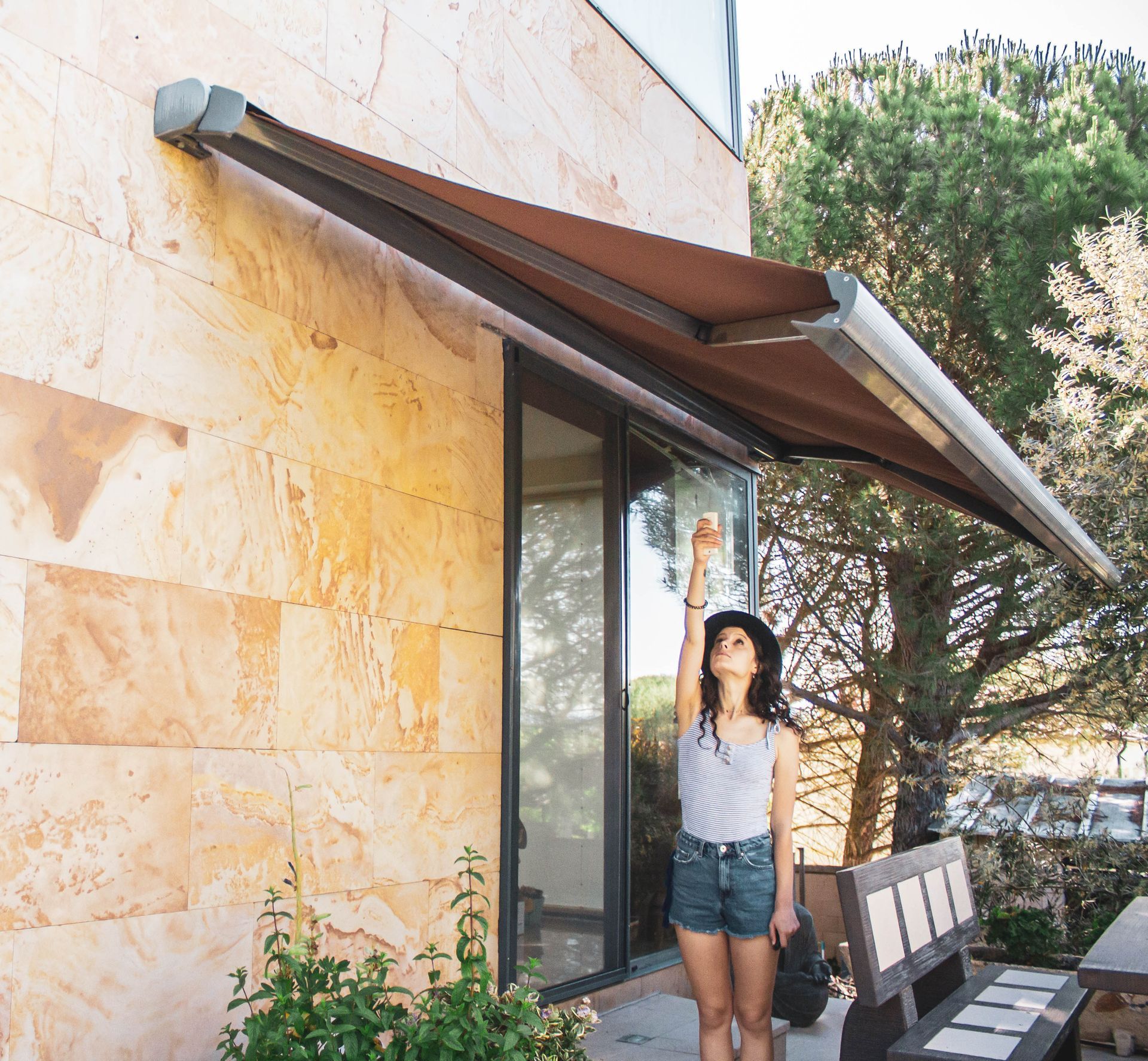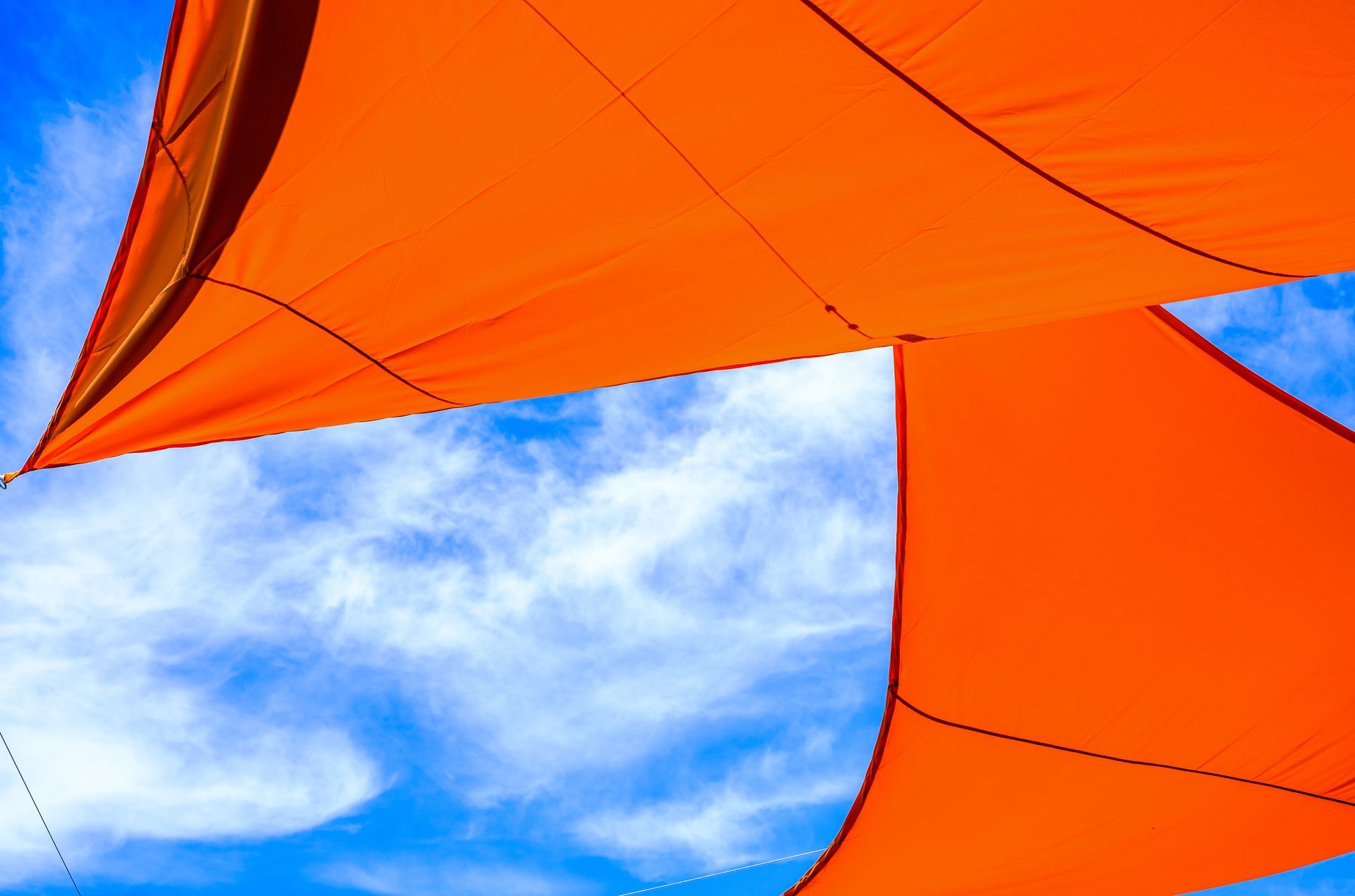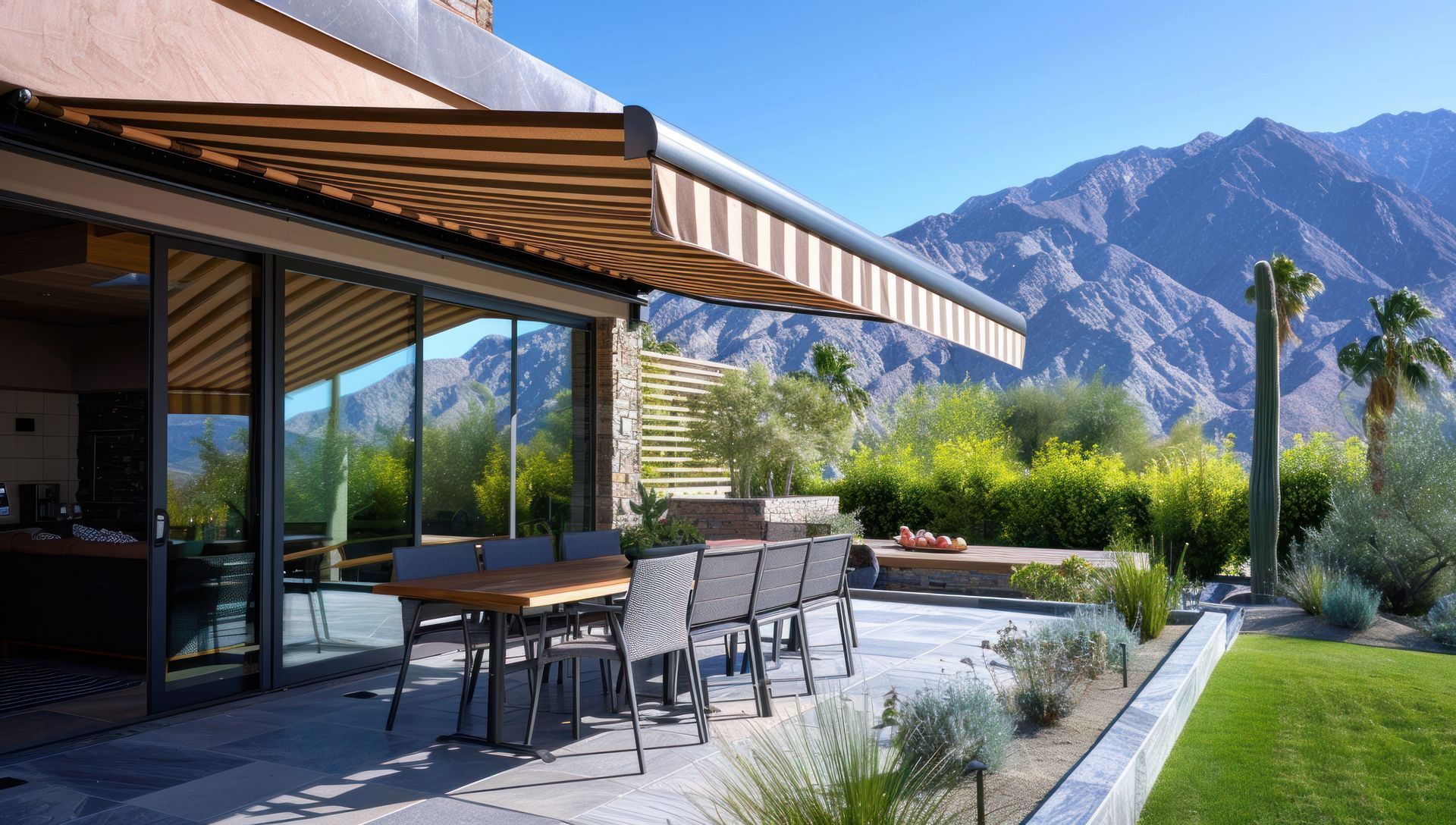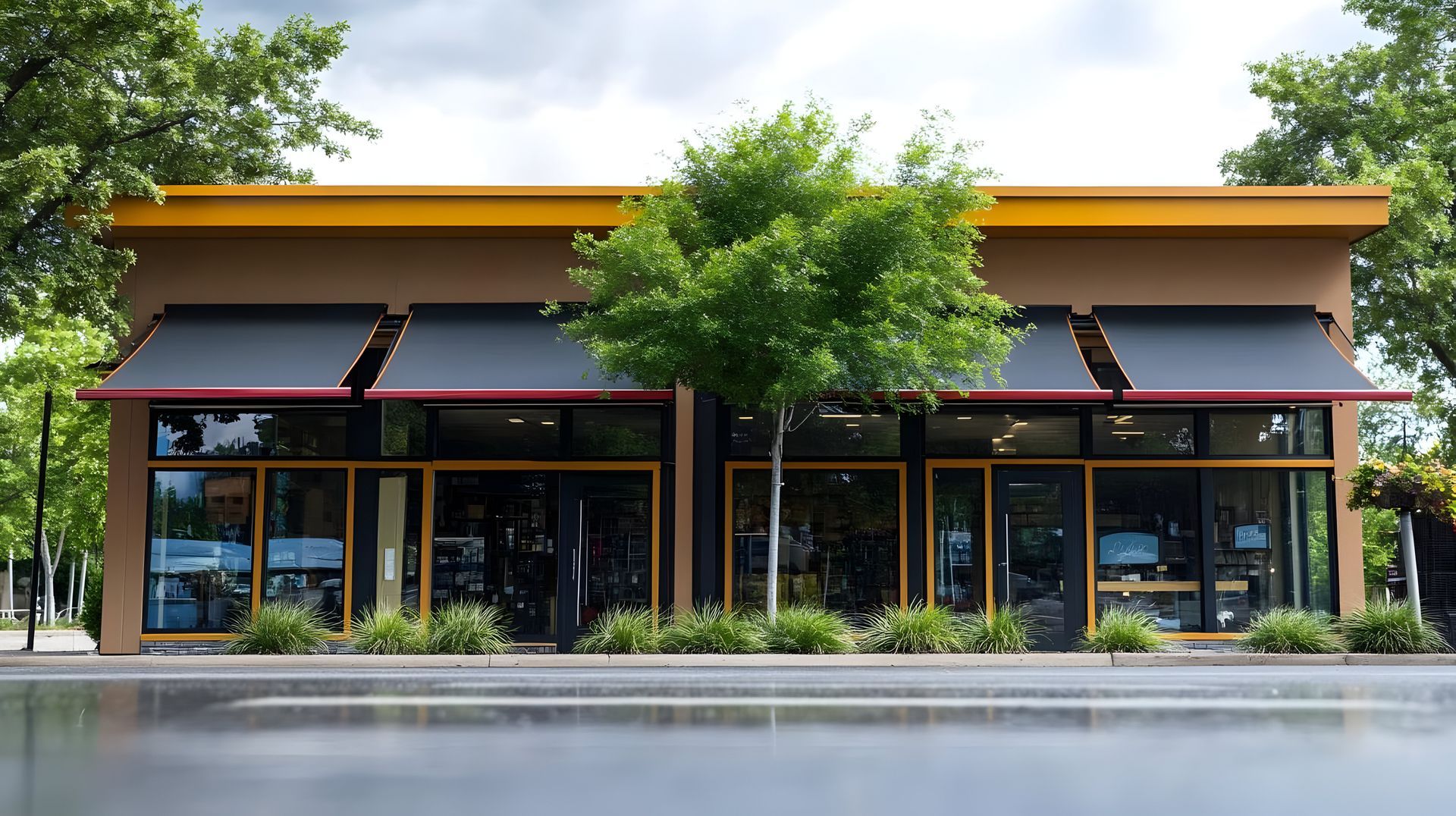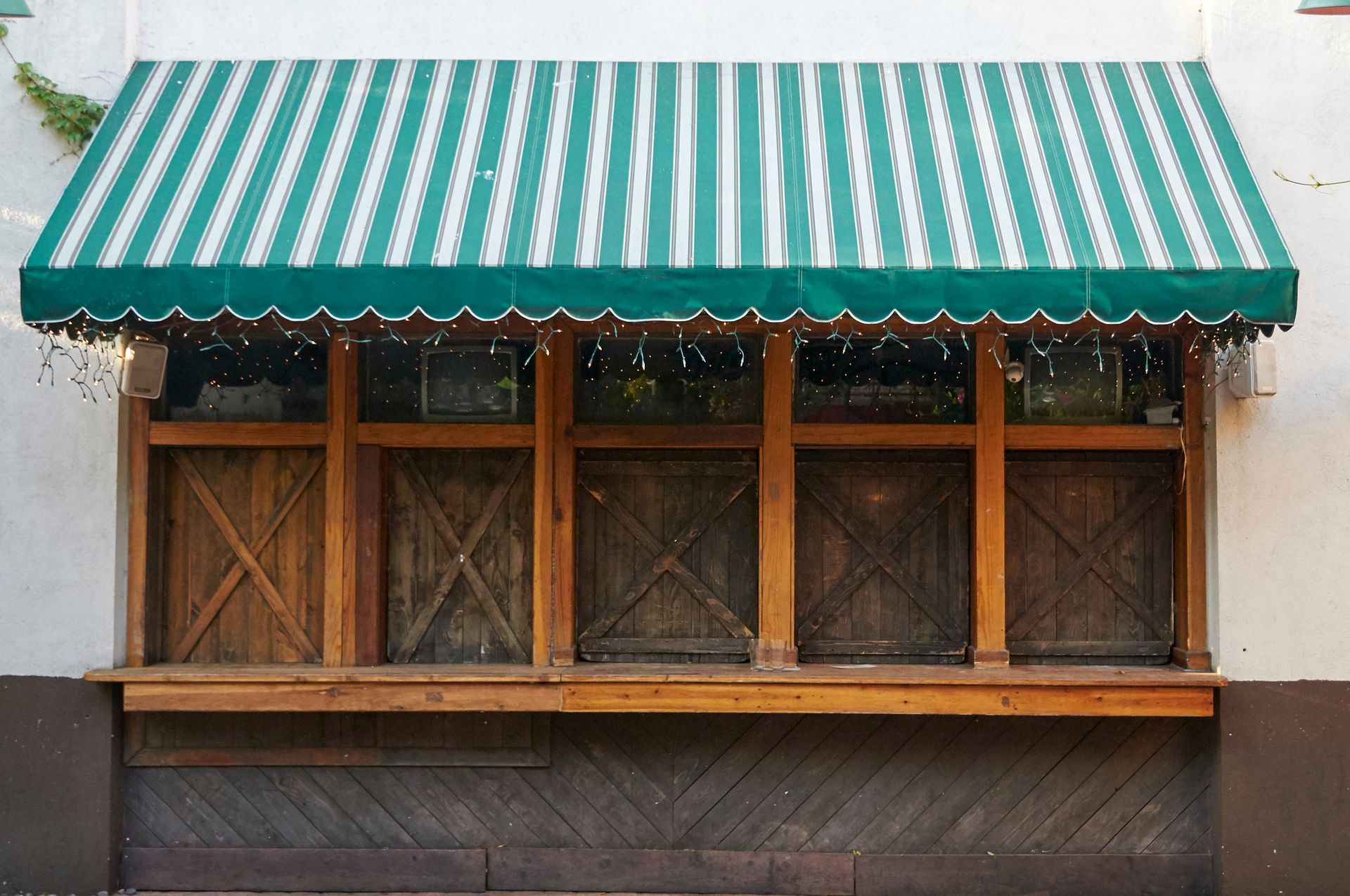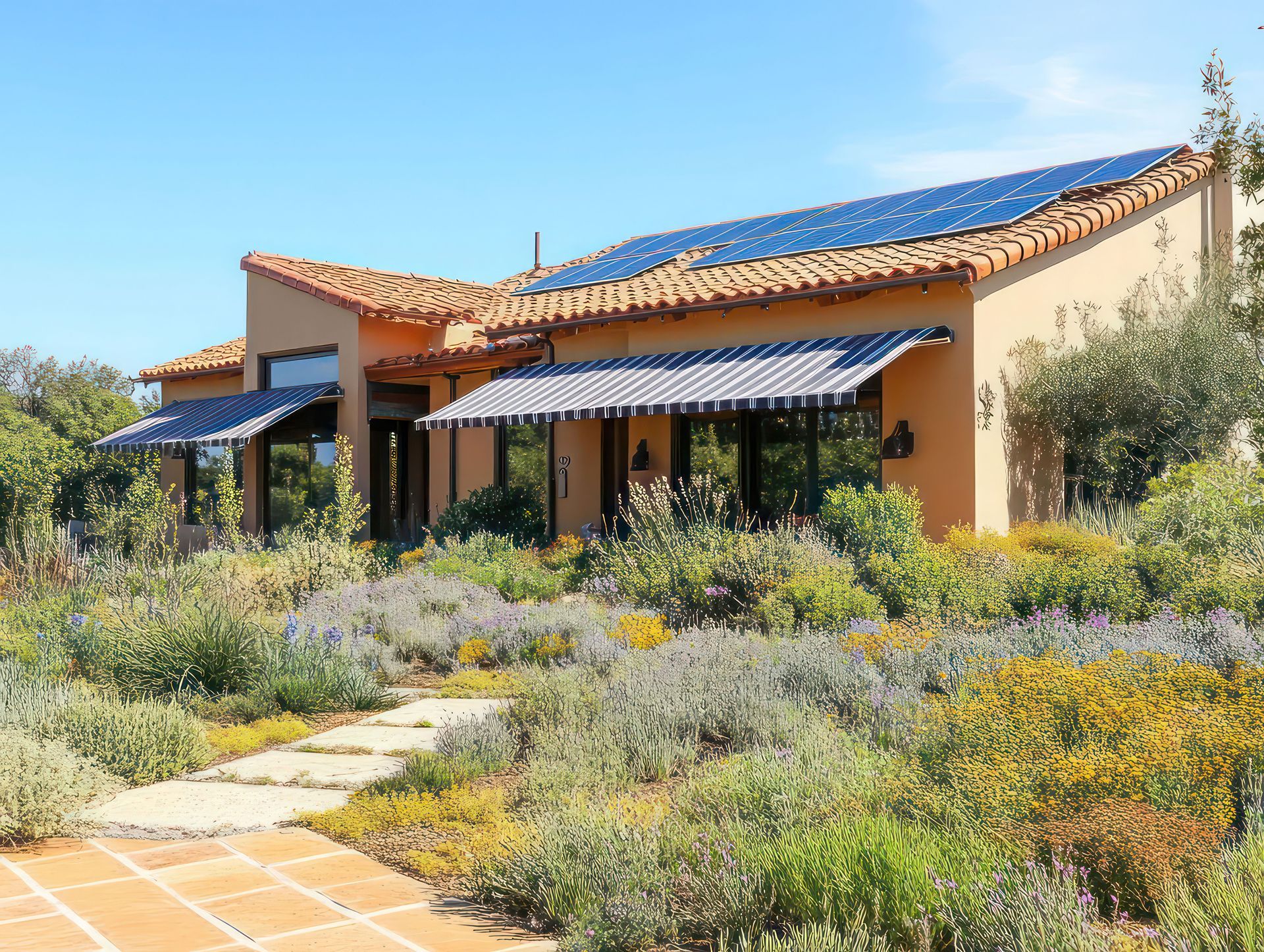How Can I Prepare My Residential or Commercial Awnings for Monsoon Season?
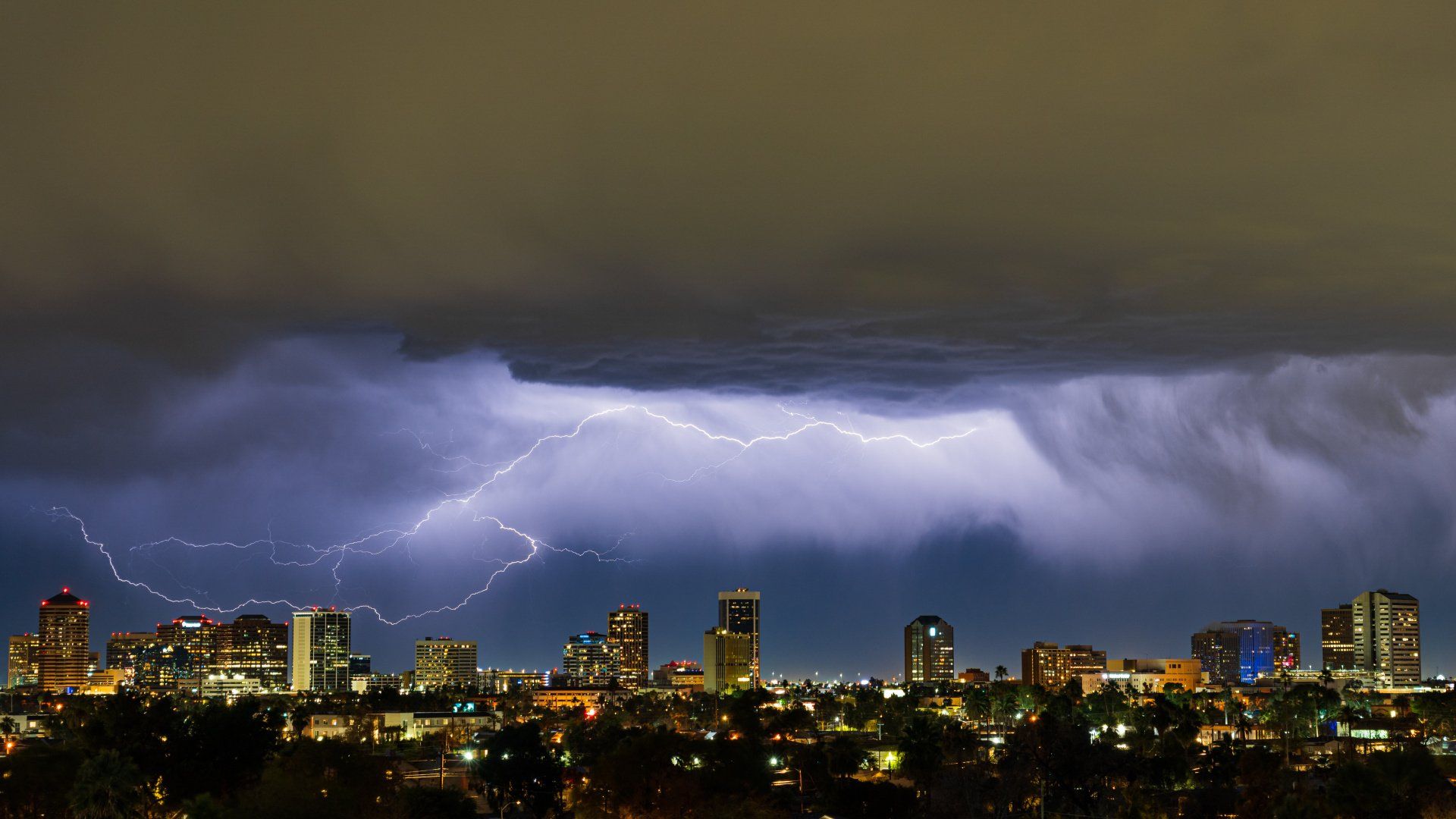
Arizona’s monsoon season occurs from approximately mid-June to mid-September. The season brings dust storms, heavy winds and thunderstorms with heavy rainfall. These severe weather conditions often lead to dangerous flash floors and can wreak havoc on people’s homes and businesses.
Preparing your awnings for extreme weather may allow you to avoid potential damages and costly repairs.
There are several ways you can secure your residential or commercial awnings during the unpredictable monsoon season and protect them from severe damage.
Retract Your Awning
If you have a retractable awning and see a storm brewing, make sure to retract it before the rain and wind arrive. While many retractable awnings are made from high-quality fade-resistant materials, the extendable arms often aren’t durable enough to withstand strong winds.
To keep your retractable awning in top-notch condition, limit its exposure to severe weather. You can retract your awning either manually or by having a motorized awning installed which can be retracted or pulled in with a push of a button.
Add a Windbreak
If you have an awning installed in the backyard of your home, consider protecting it with a windbreak. A windbreak can be made up of various things, like trees, shrubs, a wall or fence. The windbreak’s main job is to provide shelter from strong winds, such as those that sometimes accompany monsoon storms.
A windbreak doesn’t just provide protection from strong winds. It can also be an important element of your backyard’s landscaping, creating privacy and beauty in your outdoor space.
Invest In a Wind Sensor
Phoenix is no stranger to high winds, especially during the rainy monsoon summer. If you live in a remote location, these winds may be especially prevalent, making things like awnings and patio furniture susceptible to damage.
Home or business owners who have retractable awnings should consider investing in an awning wind sensor. A wind sensor is a device that measures wind speed and direction. These sensors are usually attached to an awning and will automatically retract it if they detect high winds. An awning wind sensor is customizable based on different weather thresholds and is a convenient and time-saving way to protect your awnings from severe weather. They can be especially useful in the Valley where storms can be hard to predict, and homeowners aren’t always nearby to close an awning.
Use High-Quality Awning Fabrics
If you haven’t installed an awning yet but are looking to add one to your home or business’s exterior, consider one that’s made from a high-quality and durable fabric, like those offered by Arizona Awnings. You may be tempted to save money by choosing a low-price fabric, but when extreme weather hits, your awning will likely end up getting damaged or blown away by the wind.
You cannot always protect your awning from severe weather. That’s why going with materials that are wind- and fade-resistant will help prevent damage to your awnings and keep them looking like new for years to come.
How to Clean Your Awning After a Monsoon Storm
Sturdy awnings should be able to withstand the high winds of some dust storms, but that doesn’t mean they won’t be coated in dust. You might need to clean your awnings during or at the end of monsoon season:
- Gently wash your awning with lukewarm water and a mild detergent to remove dust and debris
- If the awning is retractable, let it airdry before retracting it to prevent mold and mildew from forming
- Check the fabric for tears and contact a professional to fix them for you
- Tighten lose screws and replace any damaged parts, such as the fabric, rails or roller tubes
Add High-Quality Awnings to Your Phoenix, Mesa or Scottsdale Home or Business
At Arizona Awnings, you can choose from a variety of durable residential and commercial awnings, all of which are custom-made to satisfy your unique needs.
We encourage you to schedule a free estimate by calling 602-252-3430, or browse our website to learn more.
